The Sages inform us that once the entire world was ruled by a single Emperor. Then a great destruction occurred. All the kings of the earth gathered at a single place, a battlefield, in which the entire order was destroyed. This was the great transition between the Ages and the world entered a new Dark Age (Kali Yuga) in 3102 B.C. with no memory of what had come before.
Among a few initiates, however, a surviving knowledge of the previous Ages was passed down from master to student. As fantastic as this all sounds a study of world culture reveals this truth – bits and pieces, like a jigsaw puzzle, scattered around the globe, fit ever too perfectly.
The impetus for this article came rather obliquely from a casual look at a map. There I noticed a curiously named ski resort in the mountains of northern Sweden called Hemavan. Now, in truth, I cannot tell you if this town is ancient or modern, nor the traditional meaning in Swedish. But the name piqued my curiosity. You see, Hemavan is a perfectly Sanskrit name. It is, in fact, the traditional name of the Himalayas. In Sanskrit Hema means ‘snow or cold’ and Van means ‘to possess’. A strikingly perfect name for a ski resort town.
As with any jigsaw puzzle it is always advisable to start with the corners – the neat straight angles, the pieces we can all agree on. This may include language and customs – elements that provide a broad view of a common culture. With those pieces in place we can then add in the odd shapes, the more esoteric tales and traditions, which only make sense within the larger frame.
Language is one such corner piece. For the purpose of this article we will define Scandinavian to include north Germanic languages such as Old Norse, Norwegian, Swedish and Danish. If we review the closest bonds that any community has, it is the family unit, and linguistically we see the connection between Scandinavian (SC) and Sanskrit (SK) fit very neatly. Father is Fadir (SC), Pitar (SK); Mother is Mor (SC), Matar (SK); Son is Son (SC), Sunus (SK); Daughter is Dotter (SC), Duhitr (SK); Brother is Bror (SC), Bratarau (SK); Sister is Syster (SC), Sodarya (SK).
One of the most popular goddesses in ancient Scandinavia was Freya. She was a Vanir, a divinity of nature, a goddess of love, fertility and fortune. The cow was her symbol and one could please her by offering flowers, planting trees, or feeding the cows. The day of the week Friday (Freya’s day) is named after her. Linguists acknowledge that Freya is related to the Sanskrit Priya meaning ‘beloved’, an apt name for the goddess of love.
The alphabet of the old Germanic and Scandinavian peoples is known as the Elder Futhark and is written using the Rune script. It is composed of 24 letters, grouped into 3 sets of 8 letters each, known as the Aettir. Like the bija (seed) letters of Sanskrit, the Runes are used in combination for divination and magic. The first Aett is Freya’s and relates to the creation of the world.
It is said that in the beginning of creation the world was frozen covered in ice. Then, the divine cow, Audumbla, the first creature in the universe, appeared and began to lick the ice. With her hot breath and licks she melted the ice revealing Ymir, the first man, encased within. Ymir then drank the milk from the divine cow, as a child does of its mother, for nourishment. Thus mankind had an intimate connection with cows from the dawn of creation. The name Audumbla is generally translated as ‘the wealth of the cow’. It is likely related to the same root in the Sanskrit word Audarya, meaning ‘generous‘ or ‘magnanimous’.
The cow was of primary importance to the Scandinavian peoples. We can see this in the first two letters of their alphabet both of which relate to the cow. The first letter, or Rune, is ‘Fehu’ meaning both ‘cow’ and ‘wealth’. It is also the first letter in Freya’s Aett, the first letter of her name, and the first creature in the universe, and thus the sacred cow belongs to her. As she was the goddess of fertility, the giving of life to the world begins with the cow. The symbol itself is a simple pictograph representing the two horns of the cow.
The cow was associated with wealth because she provides all the basic necessities of life. Her milk provides both protein, fats, and vitamins. In northern areas, with little sunlight, the cow’s milk provides much needed Vitamin D. Her manure creates fertility in the soil to grow all manner of vegetables. We even see, as far away as Iceland, girls would wash their hair in cows urine as a beauty treatment to provide shine and silkiness. Thus in Scandinavian society wealth was measured in cows and could be used in the payment of debts and as a means of exchange. For this reason Freya was also the goddess of Fortune.
The second letter in the Elder Futhark is Uruz meaning ‘wild bull’ as well as ‘rain/water’. In the Vedic tradition we also see rain and water poetically described as a bull – often as the sound of stampeding hooves. The word sacrifice means ‘to make sacred’. In the Vedic yagna (fire sacrifice) the gods provide rain, which causes the grass to grow. The grass then feeds both the cow and bull. After mating and giving birth, the cow provides milk. This milk is then turned into ghee (clarified butter) and poured back into the sacrificial fire as an offering back to the gods. This completes the sacrificial cycle, uniting the gods, the earth, the animals, and man, making the whole of creation sacred and wonderful. The Sages inform us that the higher powers left our presence at the beginning of this Age of Quarrel as we had severed our connection with nature due to our mistreatment of the cow. The symbol Uruz represents the strong stance of the bull.
The Scandinavian people had a warrior culture. Those warriors who died honorably were taken either to Odin’s Valhalla (Hall of the Slain) or to Fólkvangr (the fields of Freya). One unique element of this warrior culture was the personification of their weapons – giving them names and personalities. Odin wields a spear called Gungnir “the Swaying One’; Thor wields the hammer called Mjolnir “the Crusher”; We see the same tradition with every Vedic warrior wherein they name their weapon and paraphernalia.
As there is life so too is there death. In the Poetic Eddas there are references to a belief in reincarnation:
- Of Helgi and Svava, it is said that they were born again.
- Helgi was the name of a King whose daughter was Sigrun. She became a Valkyrie and rode the air and over the sea. She was Svava born again.
- Sigrun lived but a short while longer, for grief and sorrow. It was the belief in olden times that men were born again, but that is now called an old woman’s superstition. Helgi and Sigrun are said to have been born again as Helgi Haddingjaskati and Kara, the daughter of Halfdan, as told in ’The Lay of Kara.’ She was a Valkyrie.
At death the body was cremated as part of the funeral rites. For mighty chieftains a boat carrying the body was sent out to sea and set ablaze. In one dramatic example, found in both the Eddas and the Nibelungenlied, the body of the hero Siegfried was being cremated upon the funeral pyre. Out of grief Brunhilda entered the fire of her lover as an act of self-immolation.
Finally, while a minor point, no discussion of ancient Scandinavian culture would be complete without a brief mention of the intoxicating libation known as mead which was made of fermented honey. The word mead is derived from the same root as the Celtic ‘medb’ meaning honey. The Vedic peoples were also known to drink an intoxicating beverage made of honey. The Sanskrit word for honey is ‘madhu’. It is said that the Sage Chyavana created a demon named Mada, meaning ‘madness’, ‘intoxication’ or ‘liquor’, to defeat Indra the King of Heaven.
All of the above elements, from language, the relationship with cows, the naming of weaponry, funerary practices, concepts of reincarnation, and even an intoxicating drink made of honey, can be found explicitly in Vedic culture. These are the straight edged pieces of the puzzle providing a broad frame of reference.
Next, we will begin to add the odd shapes and pieces, the more esoteric elements for comparison.
Much of what we know about Scandinavian beliefs comes down to us from the poet Snorri Sturluson who compiled his traditions around 1200 A.D. in the Prose Edda. He composed the Prose Edda to preserve what remained of his tradition before the complete conversion of his country to the new faith of Christianity.
What follows next is a side-by-side comparison of some of the key elements between the Eddas and the Vedas. In many respects the stories are very different. This is to be expected as cultures separated by thousands of years and thousands of miles would develop in very different ways. But there are undeniable similarities too specific to be mere accident.
1 – A War In The Heavens
Eddic – There is a war between the Aesir and the Vanir.
Vedic – There is a war between the Asuras and the Devas.
2 – Creation of a Magic Drink
Eddic – The Aesir and Vanir declare a truce by spitting into a pot and from this emerged a man. He is subsequently killed and his blood creates the Mead of Poetry granting scholarship.
Vedic – The Asuras and the Devas declare a truce and churn the Ocean of Milk. From the churning of the ocean appears a man carrying a pot containing the Nectar of Immortality granting everlasting life.
3 – Theft of a Magic Drink by the King of Heaven
Eddic – Odin steals the Mead of Poetry disguised as an eagle and flies back to heaven. Drops fall from heaven making poets of all who drink it.
Vedic – Indra steals the Soma drink on the back of an eagle and flies back to heaven. In another pastime, drops of the Nectar of Immortality fall to earth marking the four holy sites of the Kumbhamela.
4 – Sacrifice of a Cosmic Giant
Eddic – The gods, headed by Odin, sacrifice the giant Ymir to fashion the world. Here is a sample from the Prose Edda:
“Of Ymir’s flesh was earth created, of his blood the seas, of his bones the hills, of his hair trees and plants, of his skull the heavens; and of his brows the gentle powers formed Midgard for the sons of men; but of his brains the heavy clouds are all created.”
Vedic – The Purusha Shukta (RV10.90) of the Rig Veda speaks of the sacrifice of a cosmic giant to fashion the world. Many linguists believe that Ymir is a truncation of the original Yama(raj).
As but one example, here is a description of the Universal Form from the Srimad Bhagavatam Canto 2, Chapter 1, verses 31-34:
“They say that the Vedic hymns are the thought process of the Unlimited One, that His jaws make up Yamarâja [the Lord of death], His teeth are His affection and that His smile is the most alluring, unsurpassable material energy. Material creation is only the casting of His glance.
Modesty is His upper lip, His chin stands for the hankering, religion is His breast and the path of irreligion is His back. Brahmâ is His genitals, His testicles are the Mitrâ-Varunas, His waist the oceans and the stack of His bones are the mountains.
His veins are the rivers and the plants and trees are the hairs on the body of the Universal Form, oh King. The air is His omnipotent breathing, the passing of the ages, Time, is His movement and the constant operation of the modes of material nature is His activity.
Let me tell you that the hairs on the head of the Supreme Controller are the clouds oh best of the Kurus, and that the intelligence of the Almighty One is the prime cause of the material creation, so one says. His mind, the reservoir of all changes, is known as the moon.”
5 – Creation of a Caste System
Eddic – A progenitor of mankind named Rig (often identified with Heimdall) establishes three castes of warriors, farmers, and workers. Heimdall has multiple mothers, is purest white, has extraordinary hearing, is ever watchful, has golden teeth, and guides humanity.
Vedic – There are four castes of priests, warriors, farmers, and workers. It would appear that Scandinavian society lost the priestly order. In the Rig Veda the god Agni (Holy Fire) also has multiple mothers, is pure white, has extraordinary hearing, is ever watchful, has golden teeth, and guides humanity.
6 – Demons Attack The Bringers of Light
Eddic – The Sun goddess Sól and Moon god Máni are chased by the demon wolves Sköll (“Treachery”) and Hati Hróðvitnisson (“He Who Hates”) across the sky and swallowed.
Vedic – The Sun god Surya and the Moon god Soma are chased by the demon serpents Rahu (“the Seizer”) and Ketu (“the Enemy”) across the sky and swallowed resulting in the eclipses.
7 – The World Tree
Eddic – The World Tree is an Ash tree named Yggdrasil. The meaning of Yggdrasil is ‘The Terrrible One’s Horse‘. Odin hung on this tree, wounded by a spear, for nine nights to learn the mystic secrets of the Runes.
Vedic – The World Tree is the Ashvattha tree. The meaning of Ashvattha is ‘Where the horse stands.’ This is also known as the Bodhi tree under which the Buddha sat to attain enlightenment.
8 – The End of the Age
Eddic – At the end of the Age there is a great battle called Ragnarok which leads to the total annihilation of the old order. The Poetic Eddas inform us:
‘Five hundred and forty gates has Valhalla, Eight hundred Einherjar (warriors) go through each door, when they go off to fight against the Wolf.“
540 gates(X)800 Warriors= 432,000 Warriors.
Vedic – The Age of Kali Yuga is 432,000 years after which a great destruction occurs.
Conclusion
When we look at this partially completed puzzle, which began with a mere glance at a map, a Vedic picture emerges. Both the broad cultural norms as well as the minute details show a consistency with the Vedic culture. No doubt much has changed over time and geography. But there are far too many points of comparison for this to be mere accident.
We would invite you, the reader, to continue researching world history and culture, collecting pieces of the puzzle. The Sages have pointed us in the right direction and now it is up to each of us to remember who we are and where everything began.
Other Articles by Vaishnava Das:
Sweet Salt – The Story of How India Invented Sugar
India – The Land of Stolen Jewels
The Vedic People of Scandinavia
Soma – Elixir of the Gods
Manu and the Great Deluge
The Samurai: Protectors of the Cow
The Vedic People of Lithuania
The Legends of Tulasi In Christianity
The Mysterious Iron Deity made from a Meteor
Ancient Shiva Linga in Ireland

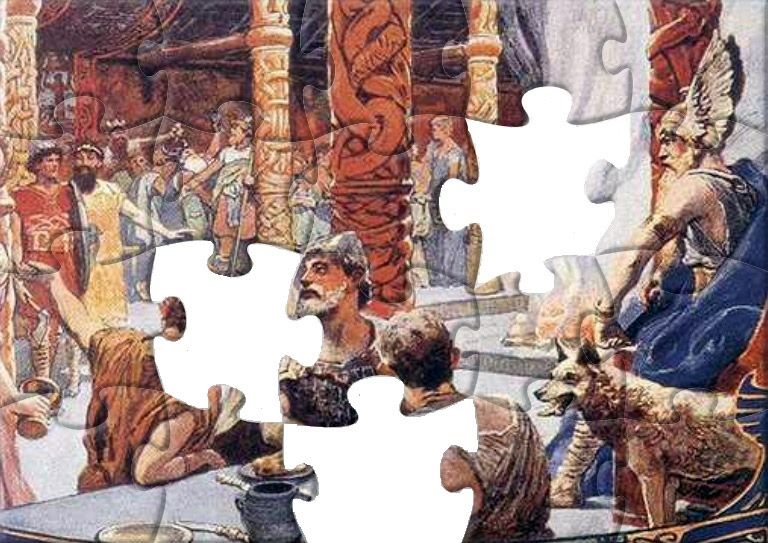
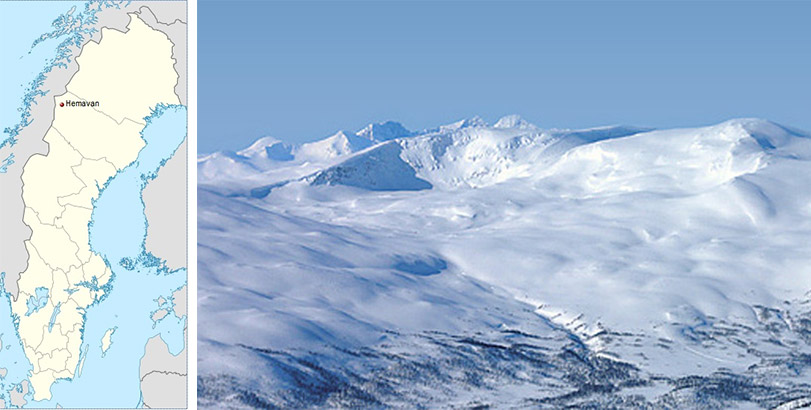
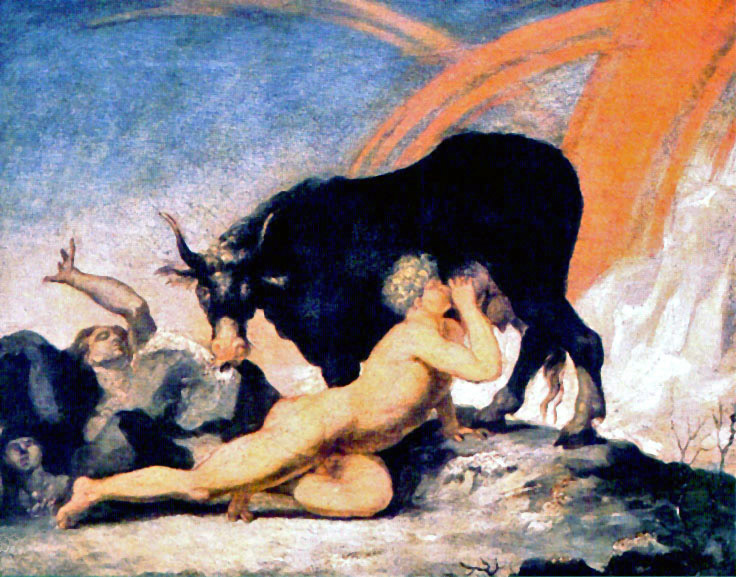
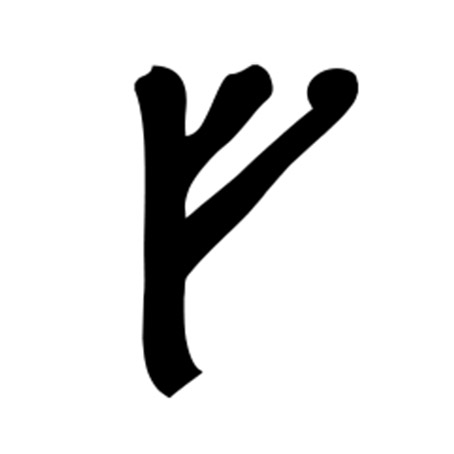
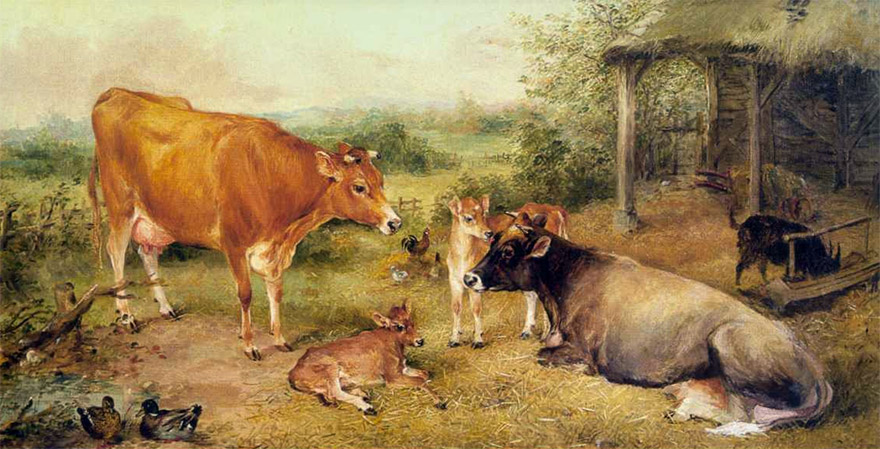
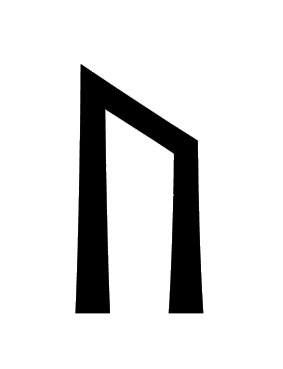
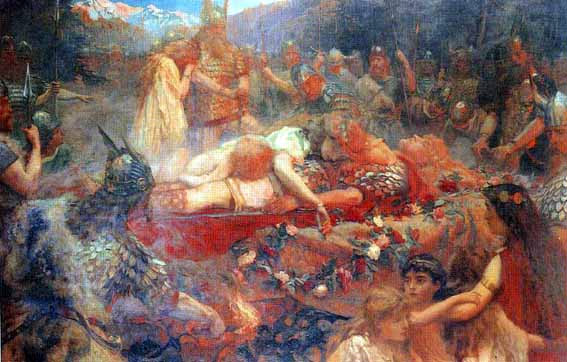
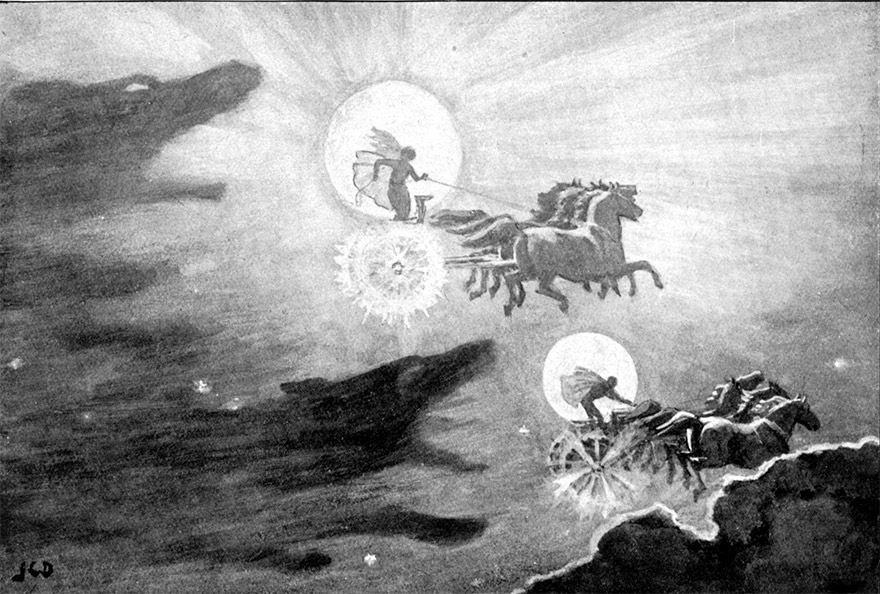
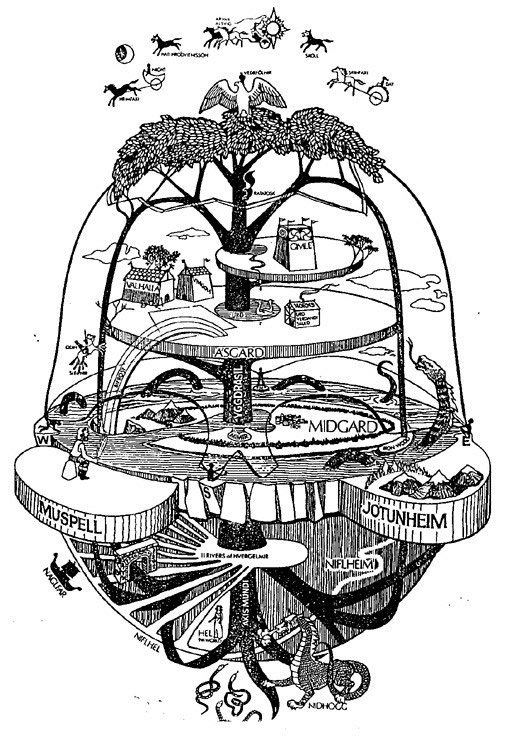
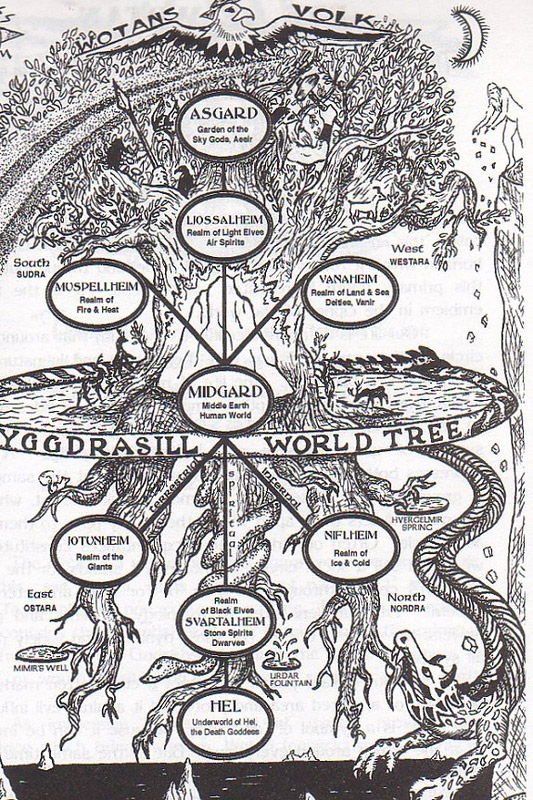

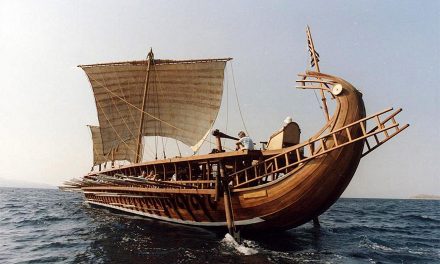









Skanda navyan!
I think that Lokmanya Tilak wrote a book ” Arctic Home of the Vedas” where he studied the constellations described in the Vedas and said that these could be seen only by people in Scandinavia. Regrettably I have not read it personally but heard from my parents.
I loved your article connecting the Vedic age with Scandanavia! Superb! (as usual) And I just wanted to add one small scrap of information regarding “Vanir.” You wrote: “One of the most popular goddesses in ancient Scandinavia was Freya. She was a Vanir, a divinity of nature, a goddess of love, fertility and fortune. The cow was her symbol and one could please her by offering flowers, planting trees, or feeding the cows. ” Vanir must be closely related to the
Vedic Goddess “Vani,” or “Sri Vani,” Goddess of the Forest, and a name for Saraswati Devi. Also, in India today She is worshipped (as I’m sure you know) on Fridays–as this is the day most Devis are offered puja. Thank you, again!
Om shanti,
Smriti
Here is one piece that might add to the puzzle. In the Vedic tradition Skanda is the god of War and his weapon is the Spear (Vel) like Odin’s.
The article is very impressive and informative. A similar analysis is there about ancient links of India and Celtic areas of Europe, particularly Ireland.
Link for my article on India-Ireland ancient relations:
http://www.hindunet.org/hvk/articles/0699/3.html
Scandinavia = Skanda Navya
Sweden n Norway in local dialect r Sverge = Svarga n Norke = Naraka
Rotterdam = Rudradham
Eindhoven = Indra Havan
Amsterdam = Amartya Dham (probably Amaravati capital of Svarga Loka)
Very interesting comparisons. However, linguistic similarities along with that of ancient texts does not prove anything. It is also possible that Vedic texts were written outside Indian subcontinent. In that context, Vedic culture then becomes borrowers not givers.
Very interesting. I have written a book on Vedic Tradition and world religions tracing the source of all religions to the Vedic. This is soon to be published. good work on Scandinavia. Keep it up.
RS
This is wonderful article worth reading by all.this is most interesting for me as i toured oslo and Norway last year.Thanks for the article
It’s wonderful……
Gaining knowledge is timeless and limitless. Your journey on Hinduism should go a long way to provide us the insight which is fathomless, and no one can achieve this within a lifetime.
May god bless you all.
The runes weren’t used for divination, that’s a modern new age thing. The vikings didn’t use the elder futhark either, they used the younger.
Kudos to IndiaDivine .org for bringing out excellent articles with thought provoking information
“The Vedic people of Scandinavia”
No doubt interesting article which also proves the rich heritage of India.
& perhaps the following might be added
The name of Sweden in Swedish is ” Sverige “which has close resemblance to Swarg.( Heaven in Indian Mythology) & I am sure people who visited Sweden would agree that the place is really heaven & another word is Hansa which is a ship or carrier and of course Hansa is Swan which is a heavenly bird. Perhaps there could be more words- If one delves- they may be found
Regards
A V Ramana Rao
outstanding
What’s your sources for Freya being associated with cows? I have never read this anywhere on all of my studies the past 20 years.
Ever since i read the ynglinga saga, I’ve been working on a theory that Odin was a shaman warrior from India, who possibly traveled from Indonesia ti Scandanavia. In Indonesia, the Amoks were very similar to the Berserkers. Odins powers are similar to those weilded by warriors in the Mahabharata.
Greetings from a gydja (priestess) of the norse religion.
Very interesting to read about my religion from a more Indian perspective. Most of it’s quite good, but there are some details I need to correct.
Freya is not that connected to cows. It is true that cattle was considered wealth, and that Freya is connected to wealth. But her animals are pigs and cats, not cattle.
You also make it sound like the Fehu rune was created from the word Fehu (meaning cattle) in the shape of a pictogram which later reached it’s current shape. But actually, the shape (and F-sound) comes from the Roman alphabet’s F, just like many other runes (Hagal and Tiwaz, for instance). All runes also have a symbolic meaning, and maybe this symbolic meaning of cattle came after someone noticed how the rune can look a bit similar to a cow’s horns.
You also call Ymir the first man, this isn’t really correct either. He is a primeval jotun, a creature of chaos, not a human. The first man in norse mythology is called Ask and was created by the gods later on.
But the point of this article, that the mythology of Scandinavia is related to that of India, is something I wholeheartedly agree with. Personally, I consider Indra quite similar to Thor. I do think that many good things may come out of cooperation between norse heathens and hindus.
This is wonderful article worth reading by all.this is most interesting for me as i toured oslo and Norway last year.Thanks for the article
Tilak’s Book : Arctic home in the vedas. — Free download (available on archive.org also)
http://vedic-nation.com/media/research_activities/9_arctic_home_in_the_vedas.pdf.
Please note that as Tilak himself mentions –it is a “hypothesis” and also borders on Aryan Migration — into India — a sensitive topic!
Like some famous Indian historians and their AIT?!
There is modern scholarship that supports most but not all of what you are saying. Many of the similarities you point out between Sanskrit and Scandinavian words are likely due to the fact that they have a common ancestor language called proto-Indo-European. Scholars believe this language was spoken by a people who lived in Eastern Europe in the 3000s BCE. Between then and the 2000s, they spread to most of Europe, the Middle East, and India. This matches with your Kali Yuga start-date of 3102 except it was a gradual process, not a cataclysmic event. Most languages in Europe and India are based on this language, and the mythologies in these cultures are probably all influenced by their mythology. If you were to compare Sanskrit and Vedic mythology to Celtic, Nordic, Classical, or other European languages and mythologies, you would probably find just as many similarities. Of course you would also find some similarities in Chinese, American, or other unrelated languages and cultures, so this does not explain all of them.
https://en.wikipedia.org/wiki/Proto-Indo-Europeans
Very informative,interesting and amazing information which all the people of the world should read without any inhibition and reservation.
very informative,interesting, out sanding and amazing information which all the people of the world should read without any inhibition and reservation.This will give a new insight to western world
An out standing research work . very good informative,interesting, all the people around the world will read without any inhibition and reservation.This will give a new insight to western world. my whole humble congratulation
very interesting….something that needs thorough reserch
The word ‘Fehu’- again related to cow’s milk in Assamese. The very first milk of a cow after she gives birth is very thik and the newborn calf cannot suck it. So it is milked and poured on a banana leaf and heated on very low flames until it becomes solid. We call it Fehu and it is distributed chiefly among children.
‘medb’ Celtic word for honey.
‘madhu’. Sanskrit word for Honey.
‘MED’ Slovenian word for honey.
THX for the article. I have a book at home which compares Slovenian and Sanskrit language. Some similarities are striking. And we also have the dual form for nouns as Sanskrit does. REGARDS
Very interesting, enjoyed reading, will follow up more.
Skanda-Navia: the latter is Tamil for Boatmen where we get Navy and Navigate.
Odinn came from Asaland [Asia] and fought the Van in Turkey [see Lake Van]. Freya was a Van and had even greater magic than Odinn
Heim-dall [World-Tree], the ‘Son of Odin’ birthed the FOUR classes; Royalty, Nobility, Farmers and lastly Servants.
Snorri Sturluson in the 1200s, compiled the Rig-sthula [songs within ‘Poetic Edda’] from Icelandic oral tradition, considered to be from their beginning in 850s.
Rig Veda mentions the training of respectable and sportsmanly soldiers the art of bows, arrows, spears, chariot fighting and iron weapons. Comparitively, RS reflects:
“Grew Earl forthwith in the halls and ‘gan
to swing the shield, to fit the string,
to bend the bow, to shaft the arrow,
to hurl the dart, to shake the spear,
to ride the horse, to loose the hounds,
to draw the sword, and to swim the stream.
… and taught him runes.”
Odin gave Rig the land of Himinbjorg – either the edge of heaven or a mountainous place in Germany or Sweden.
432,000 fighters also symbolise the syllables within 3 vedas; Yajurveda + Samaveda [288,000 + 144,000].
Tilak’s book is great; he openly laments that it was not written by someone more specialized and with access to scholarly materials, yet he makes excellent use of his materials. Needs to be expanded. I agree that the Nordic and Vedic cultures are united in preserving what is left of truth in the world, against the monster that arose in the mideast; or that is how it appears to me.
Freya actually means Lady and her brother Freyr’s name means Lord. It is a misnomer that Freya is a goddess of love, and I would advise you to look at the work of Maria Kvilhaug.
The priest class you are missing from the Scandinavians is the Volva.
My grandmother was Swedish, albeit born in USA. She grew up in Minnesota speaking Swedish. She said she was descended from the small very dark- haired, high cheek-boned Swedes that were in Sweden prior to the tall blond Germanic peoples….this makes sense
If you want, I can translate this article to spanish to publish it in our language.
I really loved this analizes.
This is a fascinating exploration and a delightful read. Of Cows and the ancient religion of Scandinavia (That my Mother and Grand Mothers practiced in Kalyanipuri and Madurai) : (The “Vedic People” ? The Vedas have become a euphemism for Aryans who practiced Brahmanism as a religion concealed under something called “Hinduism” which was fabricated by the British from “Hindu” that that Persians used for the people of the Indus Valley during the late Shukla Yajur Veda (Pre Krishna Yajur Veda) Period which was their “Vedai” (pre “Avestan”) period when they too practiced Aryan Brahmanism)
There is certainly a strong link between Northern/Germanic Heathenism and Vedic Mysticism.
(I study both)
Your article ‘Soma – Elixir of the Gods’ is a nice compliment to this article in regards to the creation of a magic drink through sacrifice:
http://www.indiadivine.org/soma-elixir-of-the-gods/
Snorres Edda is written by a christian who changed way too much of our mythology to e a reliable source. The old Edda and other texts are true sources. This text is only accurate if you assume Snorre didn’t have ulterior motives. This movement got to stop.
The name “Hemavan” was given to that town in 1918, and it consists of the words “hem”, meaning “home” and “ava” which refers to a creek in a lake. So there is no relation to the sanskrit word that reads the same.
Namaste un Sadu me conto como llegaron a India unos gerreros nomadas con ganado vacas k venian del norte europeo y k al llegar s la península indostan.les gusto tanto el clima y prados k vieron decidieron quedarse .Ellos eram blancos y mas altos k los habitantes del lugar k eran mas bajos y de piel mas oscura . Gerrearon y vencieron a los antiguos avitantes (los Dravidas adoradores de Shiva) los ganaderos nomadas se instalaron su Deidad era la vaca y su mentor Krisna ellos crearon las castas siendo ellos las mas altas y respetadas Bramanes y satrias(sacerdotes y gerreros ) mas los Dravidas las mas bajas vendedores y artesanos con el tiempo se mezclaron sus religiones pero no las personas y asi surgio el Hinduismo y las castas Om namo Narayam
The connection between the Vedas answer the Eddas is not a new topic. While I don’t agree with all of the connections you make, but there are many similarities between the two traditions. This is because both traditions have developed from a common ancestral culture. Some people from the Indo-European culture moved south to India, others moved north to scandinavia. These 2 groups encountered different people and different traditions as they moved, developing to new forms.
Interestingly, the Swedish word ‘Veta’ means ‘Know’ and the Sanskrit ‘Veda’ means ‘Knowledge’.
Nice. But let’s not get too excited and propose that the ‘Vedic people were originally from this corner of the world: here are the trace evidences.’ That would be too premature, misleading and … conniving. It’s been done before and I don’t think we are going to fall for that one again. Vedic culture is still a living culture in India. Nothing has been lost to time or marauder of all hues. What does that tell us? That this is the true home. The source, the fount head. It’s from here it went there. Okay.